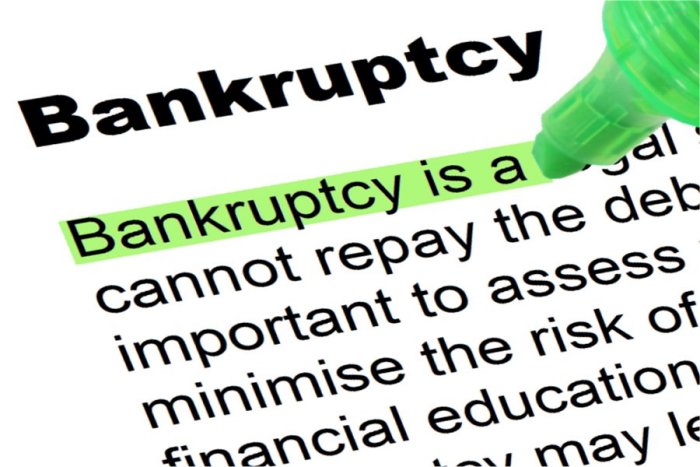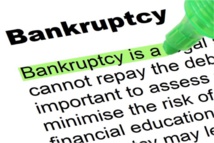Modern bankruptcy law in Italy is not so cruel (although until 2006, the debtors lose the right to vote, and liquidators read all their mail). However, this procedure is painful and slow, and usually ends up with the company’s liquidation, not the debt restructuring.
Minister of Justice of Italy created a special commission to develop a fundamental change in the law. The reform plan to be released in December.
Meanwhile, last week, the government adopted an emergency decree that allows unlocking the business with bad debt. The authorities hope that it will allow banks to lend more worthy companies and thereby stimulate the economy, which, after three years of recession, has increased in the I quarter of 2015 by 0.3%.
Slow and inefficient system of civil justice in Italy is one of the main obstacles to economic growth and investment.
In World Bank’s ranking Doing Business, Italy is the 147th out of 189 countries in the category of "Enforcing Contracts".
For this procedure, the Italian entrepreneurs usually take 1,185 days compared with 540 days in the rich countries. Italy has much better results in the category of "Resolution of insolvency (bankruptcy)" - 29-th line. However, the Italians are quite far behind the most developed economies.
Bankruptcy in Italy takes an average of more than six years (in 2008 - nine years), and can take up to 4.5 years on the foreclosure. This is one of the longest procedures in Europe.
All of this was especially problematic during the financial crisis, when corporate insolvency had sharply increased: 6 thousand cases in 2007 to 14 thousand in 2014.
The result was a mass non-payment of loans, the total amount of which reached 325 billion euros in December, or 16% of the total loan portfolio.
According to Roberto Nicastro of Italy's largest bank UniCredit, bad debts have become so commonplace that many companies avoided releasing debtors accounts (for fear that they would never get the money back), and had to deal with only those who can pay immediately.
The emergency decree should simplify the procedure of bankruptcy and increase the amount that the lender can collect from the debtor. It also introduces a special scheme under which a restructuring plan may be approved if 75% of the creditors assent it.
According to Lorenzo Stanghellini from the University of Florence, the decree must also accelerate the foreclosure and sale of the mortgaged property for about a year, and the bankruptcy procedure - for two years.
The effect of innovations will take some time to become visible, as the changes are applied only to new cases.
However, according to the forecast of Milan investment bank Mediobanca, reducing the period of recovery of the mortgage for one year can reduce the gap between the expectations of bad debts from banks and offers customers up to 3 percentage points.
More radical changes in the bankruptcy proceedings should be expected only from the future reform plan which the Ministry of Justice will publish by the end of the year.
According to Tommaso Foco of Italian law firm Portolano Cavallo, bankruptcy in Italy is still the subject of shame, so when a local entrepreneur is finally ready to admit that his company is experiencing serious financial problems, he is almost impossible to be saved.
Bankruptcy’s deprivation of stigma may be as hard as acceleration of the associated procedures.
source: theeconomist.com
Minister of Justice of Italy created a special commission to develop a fundamental change in the law. The reform plan to be released in December.
Meanwhile, last week, the government adopted an emergency decree that allows unlocking the business with bad debt. The authorities hope that it will allow banks to lend more worthy companies and thereby stimulate the economy, which, after three years of recession, has increased in the I quarter of 2015 by 0.3%.
Slow and inefficient system of civil justice in Italy is one of the main obstacles to economic growth and investment.
In World Bank’s ranking Doing Business, Italy is the 147th out of 189 countries in the category of "Enforcing Contracts".
For this procedure, the Italian entrepreneurs usually take 1,185 days compared with 540 days in the rich countries. Italy has much better results in the category of "Resolution of insolvency (bankruptcy)" - 29-th line. However, the Italians are quite far behind the most developed economies.
Bankruptcy in Italy takes an average of more than six years (in 2008 - nine years), and can take up to 4.5 years on the foreclosure. This is one of the longest procedures in Europe.
All of this was especially problematic during the financial crisis, when corporate insolvency had sharply increased: 6 thousand cases in 2007 to 14 thousand in 2014.
The result was a mass non-payment of loans, the total amount of which reached 325 billion euros in December, or 16% of the total loan portfolio.
According to Roberto Nicastro of Italy's largest bank UniCredit, bad debts have become so commonplace that many companies avoided releasing debtors accounts (for fear that they would never get the money back), and had to deal with only those who can pay immediately.
The emergency decree should simplify the procedure of bankruptcy and increase the amount that the lender can collect from the debtor. It also introduces a special scheme under which a restructuring plan may be approved if 75% of the creditors assent it.
According to Lorenzo Stanghellini from the University of Florence, the decree must also accelerate the foreclosure and sale of the mortgaged property for about a year, and the bankruptcy procedure - for two years.
The effect of innovations will take some time to become visible, as the changes are applied only to new cases.
However, according to the forecast of Milan investment bank Mediobanca, reducing the period of recovery of the mortgage for one year can reduce the gap between the expectations of bad debts from banks and offers customers up to 3 percentage points.
More radical changes in the bankruptcy proceedings should be expected only from the future reform plan which the Ministry of Justice will publish by the end of the year.
According to Tommaso Foco of Italian law firm Portolano Cavallo, bankruptcy in Italy is still the subject of shame, so when a local entrepreneur is finally ready to admit that his company is experiencing serious financial problems, he is almost impossible to be saved.
Bankruptcy’s deprivation of stigma may be as hard as acceleration of the associated procedures.
source: theeconomist.com



















